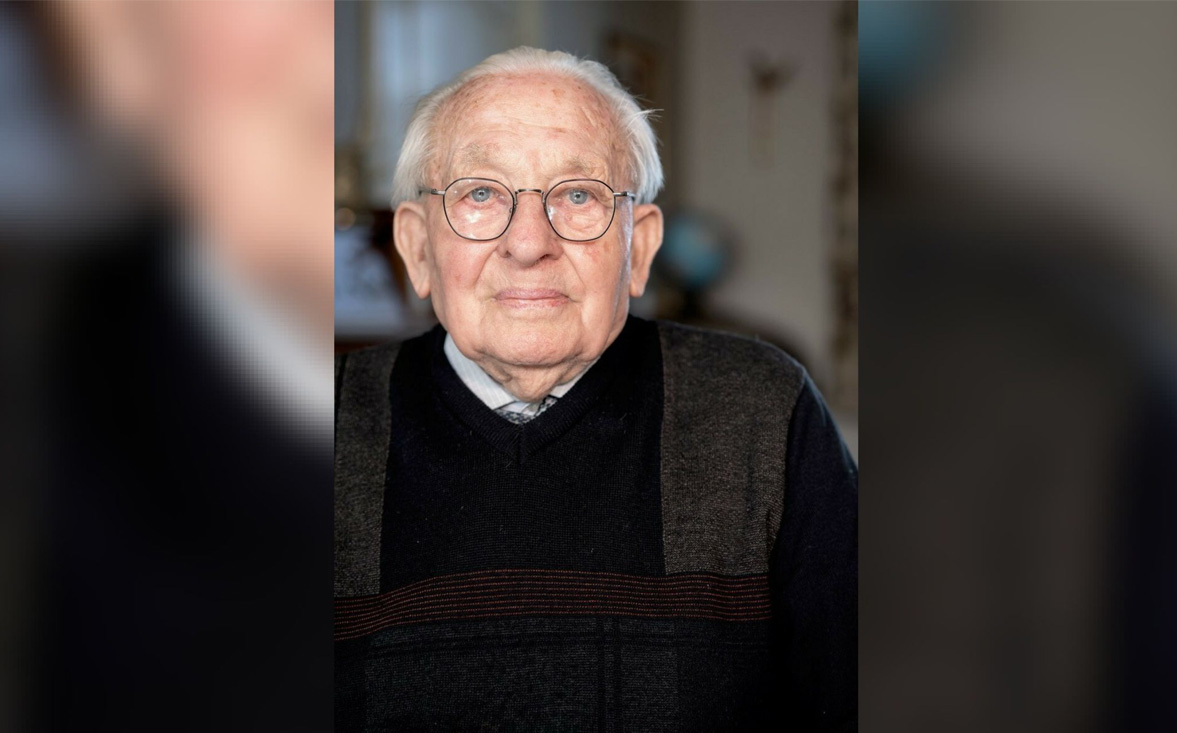No products in the cart.


Eyewitness Story: Kees Weststrate
In 1938, Kees Weststrate, a farmhand from Nieuwdorp, is nearly ten years old. He closely follows world news and vividly remembers the Munich Agreement between Hitler and Chamberlain. Like many others, Kees thinks, “This will end well, no war.” But a year and a half later, on May 10, 1940, he wakes up to the roar of planes over Nieuwdorp. Together with his neighbor’s daughter, he watches a smoking fighter plane fly by. From the swastikas on the aircraft, he recognizes the German bombers. The war has begun.
The first years of the occupation are relatively quiet in Nieuwdorp. Kees continues to go to school until, on the first day of the occupation, the teacher tells them it’s better to go home. In the years that follow, farmers are forced to supply equipment and labor to the Germans. Kees, as the youngest farmhand, is not exempt from this. He carries tree trunks and helps place poles in the fields, intended to prevent enemy planes from landing.
Collecting Wood at Night
The war years also bring dangerous situations. At night, Kees joins his father and a neighbor to collect firewood from the fields. Using a cart and an old horse, they saw tree trunks to take back home. When a farmer betrays them, two German soldiers confront them, demanding the cart and the horse. Kees notices the Germans are nervous, as there are only two of them and six Dutchmen. “In that dark polder, they were clearly uneasy,” Kees recalls.


Mad Tuesday and the Sloedam
On Mad Tuesday, September 5, 1944, villagers loot the Reformed Church in Nieuwdorp, which the Germans have been using as a food storage facility. Liberation seems imminent but does not materialize. The Germans threaten to execute the mayor if the stolen goods are not returned. Meanwhile, work on the farm continues. Kees recalls how, during his chores, debris from a plane and personal belongings, such as clothing, fell from the sky. “A piece of the plane was slick with blood,” he says.
Not long after, Kees witnesses the intense battles for the Sloedam up close. The farm where he works is repurposed as a first aid post for wounded soldiers. “The lightly wounded sat in a jeep. The severely wounded lay on the hood, and even in the luggage rack, wounded were transported,” he recalls.
When the Canadian troops fail to capture the Sloedam, the Scots adopt a different tactic. Using small boats, they cross the Sloe and place mattresses in the mud to walk across. Kees watches the offensive from the attic window. “During the day, you could see the canoes crossing. It was a complete surprise for the Germans,” he recalls.
Kees Westrate
Below, discover the story of Kees Weststrate, a farmhand from Nieuwdorp who witnessed the Battle of the Sloedam up close. His memories offer a unique insight into the war years in Zeeland and the courage of the liberators.

